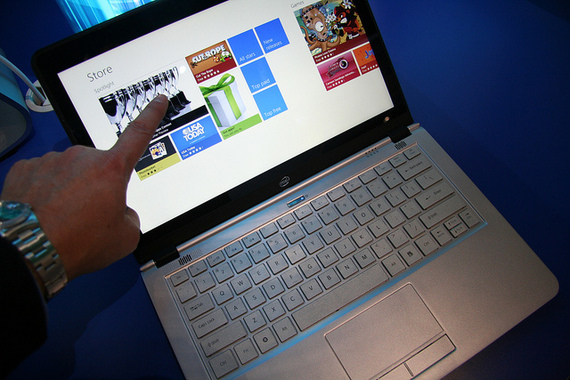I'm thinking the flying car is right around the corner.
OK, no one at the Gartner Customer 360 Summit 2014 directly predicted an airborne commute anytime soon, but I'm just back from the annual gabfest focused on winning and keeping customers, and from the sounds of things, consumers and those who sell to them are in for quite a ride.
The rise of smart machines, the power of machine learning, the growth of the Internet of Things (like appliances and cars), the expansion of payment options, the prevalence of the cloud, the insights of big data and the growing sophistication of consumers are combining to create a future of shopping in which people on both sides of the counter are going to have to be more thoughtful about how they go about their business.
For consumers, the potential for added convenience, greater bargaining power and the ability to find precisely what they want is all on the upside. But just as flying cars will have their drawbacks (crashes will hurt a lot more, insurance premiums will be higher, sticker prices, too), there are potential downsides to consumption super-charged by technology.
Many of the key innovations count on retailers knowing more about their customers -- not necessarily knowing more personal data about specific individuals, but understanding their tastes, price points and fashion sense, even if anonymously.
A number of surveys have found that shoppers are willing to hand over information in return for something of value -- convenience, a better price, a more precise match to their desires. But those participating in the rapidly evolving digital marketplace are going to want to be vigilant; to understand what they're turning over to whom and what it will be used for.
For their part, retailers are going to have to understand that they need to continue to innovate while still respecting their customers' privacy expectations.
"We're going to be able to get that much more context and know our customers better," Gartner analyst Hung LeHong told the crowd of executives and technology managers at the summit. "But at the same time, customers, we believe, are also going to have different demands."
In short, LeHong said, customers are going to expect retailers to respond to them, and to some extent know them, no matter how they are shopping and buying -- on the Web, with a smartphone in the store, or by using a combination of sales channels.
He then laid out a not-too-distant future in which the relationship between consumers and those who sell them stuff will be upended by 10 technology trends:
- The convergence of big data, the cloud, social networks and mobile devices, which when layered on top of the Internet of Things, will provide merchants with unprecedented information about their customers. Virtual assistants will increasingly step in to take the place of people in some interactions. The growth in the number of ways customers can reach businesses will make it extremely hard to staff up to the need. "You need to scale cost-effectively," he says. "To do that strictly with the human workforce can be done, but it's going to be expensive."
Every interaction with a consumer will be an interaction with his or her entire social network. "You need to employ technology to help you track that," LeHung says. "How far do they propagate? What do they propagate? How do I influence that?" Real-time service transparency is a must. LeHong says we have the technology to track almost anything: the length of checkout lines, the exact locations of products we've purchased online, the progress of a pizza we've ordered. "Customers will get more and more used to it and in the future they will demand it." The Internet of Things: Yes, diapers can now send parents a tweet when it's time for their kids to be changed. "We can Internet-enable diapers, essentially," LeHong says. But this is going well beyond diapers to household appliances, automobiles, fitness devices and on and on. Each wired device, he says, can become another way for consumers to communicate with companies that sell them goods and services. The future of personalization is at the intersection of customer transaction history, context and intent. Increasingly it will be necessary for businesses to consider several factors when determining just what it is a consumer wants. Enterprises will want to consider contextual factors, such as the weather and a shopper's location, all while respecting a consumers' wishes regarding privacy. The voice of all customers will not be equal. Some consumer's voices are simply louder than others. "A guy with 5,000 Facebook friends, if he bad mouths you, that's damaging," LeHong says. "If a CNET editor bad mouths you, then obviously that's a big deal. Put those two guys up against you or your friends. Will you have as much influence as they do?" Privacy can be purchased. Consumers have shown that they are willing to share personal data in return for a better price, better service, a more convenient shopping experience. (This Cisco data covers that along with a number of LeHong's other points) Still, it's important for retailers to be clear about the arrangement and to protect the information they gather. "Trust, on the other hand, you cannot buy," LeHung says. "You have to earn it." Transaction methods are exploding. The days of "cash or credit" will seem more quaint every day as payment methods such as Square, digital wallets, PayPal, loyalty points and more come on the scene. Merchants need to be prepared for payments in all their forms to avoid frustrating and confusing their customers and to take advantage of the increased loyalty and lower costs that alternative payment can bring. ("The New York Times" recently wrote about this very thing.) "In the future," LeHong says, "payment will become it's own experience, a customer experience of its own." Price visibility will become the norm. Even more so than today, consumers will know what a particular product costs at a range of stores -- online and brick and mortar, LeHong says. Merchants will no longer compete on the regular price of an item, but instead on "temporary price reductions," that might lead to different prices for loyal customers and infrequent customers, for instance. The nature of loyalty rewards will change. Today, LeHong says, you buy groceries and get loyalty points; you take a flight and get frequent flier miles. But why just make customers happy after they've bought something from you? How about winning them over? "We believe it's going to go from something that is post-transactional to something that actually spans the entire customer engagement cycle," LeHong says. Why not award a shopper some miles for checking fares on an airline site or why not give a customer some loyalty points just for walking into your store or your restaurant?The day, LeHong says, is coming. Makes you wonder what sort of award they'd get for arriving in a flying car.
Mike Cassidy is the storyteller at BloomReach, a Silicon Valley big data marketing application company that does business with e-commerce enterprises. Follow him on Twitter at @mikecassidy.

